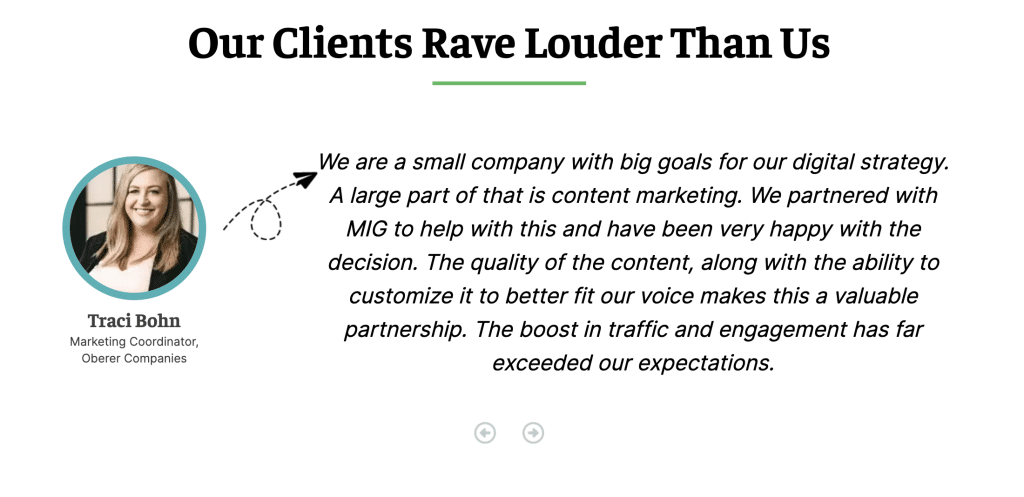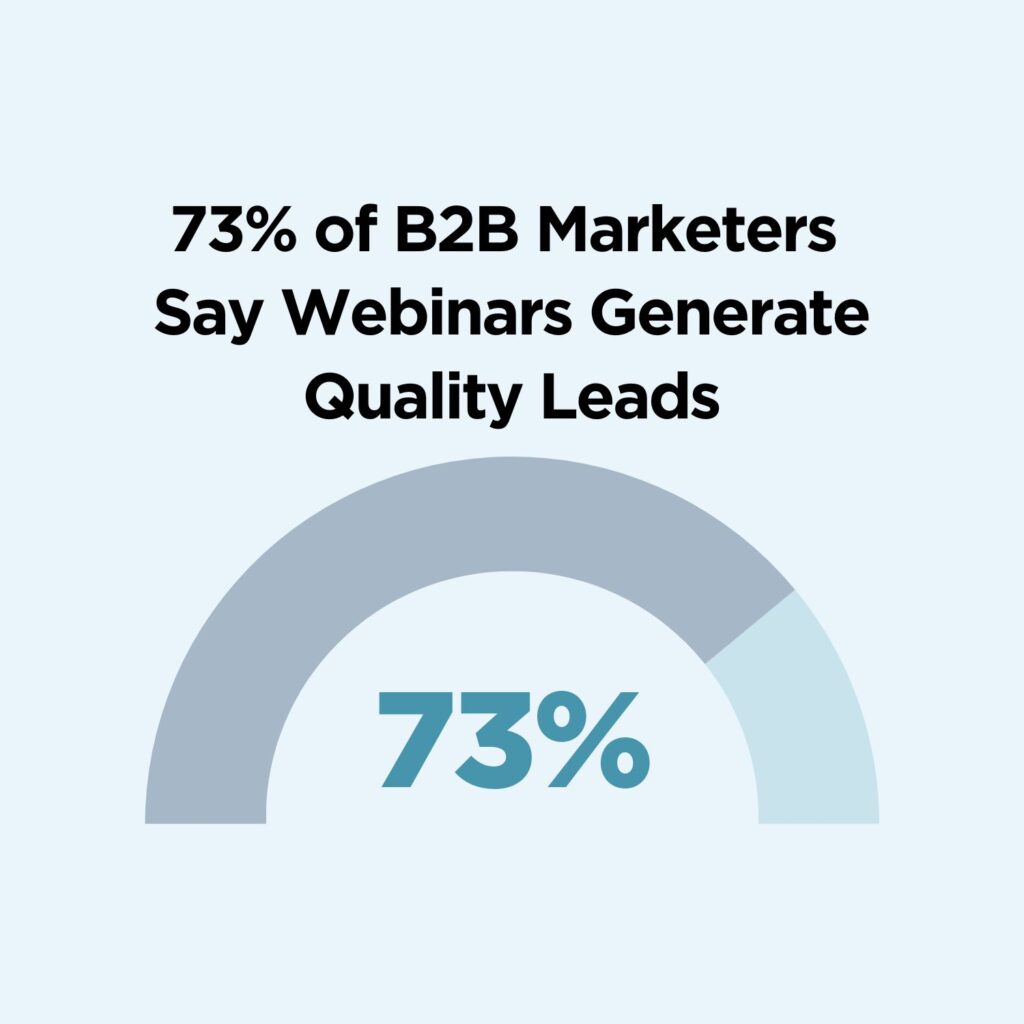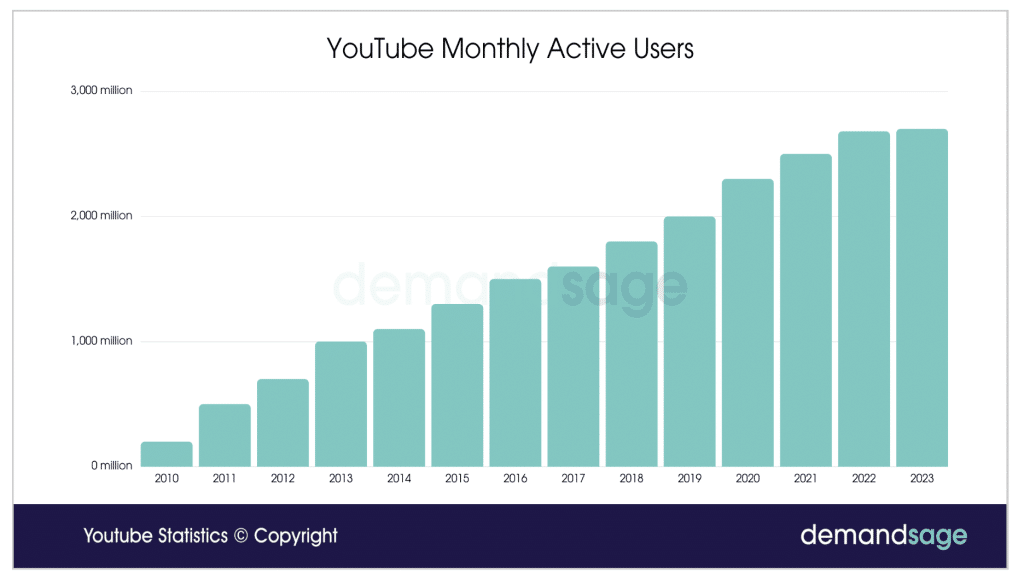
Every month, WordPress alone sees a whopping 70 million new blog posts. With such staggering numbers, the digital landscape is a battleground for attention. It seems everyone, from startups to seasoned enterprises, is diving headfirst into content marketing. But in such a saturated space, how can you ensure your voice is heard? Is it even worth it?
Let’s put things into perspective. While the volume of posts is immense, over 400 million individuals consume blog content monthly. Among them, surely, are potential customers just waiting to discover your content. And with content marketing raking in an impressive $300 billion in sales, there’s a substantial opportunity waiting to be seized.
But here’s the real question: How do you capture a significant slice of that audience? A mere average share might only translate to a handful of views. Unless every view holds the promise of a big ticket sale, mere numbers won’t cut it.
The solution? Strategic promotion. It’s about thinking differently, going beyond the conventional, and embracing innovative strategies to drive traffic to your blog.
And you’re in luck! We’ve done the brainstorming for you and curated a list of 16 impactful ways to increase blog traffic.
1. Leverage User-Generated Content
One of the most effective strategies to increase blog traffic is embracing user-generated content.
Encouraging readers to share their experiences and insights not only enriches your content library, but also fosters a deeper sense of community. When you provide a platform for their voices, you’re tapping into a myriad of diverse stories and viewpoints that can resonate with a wider audience.
Moreover, user-generated content has a tangible impact on engagement. According to a recent study, 93% of people say user-generated content is very helpful when making purchasing decisions.

Image Source: Canny
By integrating UGC into your blog, you’re not just enhancing content variety, but potentially influencing reader behavior in a positive way.
Not to mention, when people see their contributions featured, they’re likely to share them across their social networks. This organic sharing can introduce a new set of readers to your platform.
As you plan your content strategy, always consider the power and potential of your reader’s contributions. It’s a collaborative approach that can drive engagement and increase blog traffic.
2. Don’t Sell
Or, at least, don’t appear to sell. People can smell that a mile away. Instead, your blog truly has to be designed to educate, entertain, engage and inform. It has to feel like – rather than there being a business trying to push through a poorly concealed sales agenda – that there is a person or a team of people who want to help by offering valuable information and insights.
Only in this way can you get other bloggers to share your page. After all, they’re intensely sensitive about their reputation and don’t want to run the risk of tarnishing it by linking to sales-pushing content, even if that site does occasionally have good content.
And they are the gatekeepers to becoming part of the established industrial conversation. Now this doesn’t mean you can’t use SEO and keyword research tools. It just means you should take the time to make certain it isn’t blatant or jarring.
3. Share 3x
A common mistake made when people use social media is to not share their content enough as they don’t want ‘to be a bother’. This is a shame, as most social media sites do not actually show all of your contacts your adverts.
For this reason, it’s always a good idea to share what you’re doing more than once. A good strategy is to share your content three times within the first week. So the first day, the second day and then a week later. Repeat on different channels or sites that can bring you qualified traffic for free.
This will mean far more eyeballs will see your unique content, which means there is a far greater likelihood it will get liked, shared and talked about. And that is ultimately the point of a post, isn’t it?
4. Provide Social Proof
This is especially true if you’re selling directly to the public, but even if you’re B2B this bears thinking about. We like what other people like. It’s not a pretty side of our character, but it’s nonetheless true and you can either uselessly rail against it or embrace it.
What this means is that we have to appear to have a following. This can be established by having people comment on the content we’re producing, having a large number of likes on social media or having testimonials. Basically we just want to show off that other people are paying attention to us and are liking what we do.
So in the beginning, when you’re just starting out, it’s important to push hard to get that social proof sorted. Consider putting up some testimonials (with pictures), getting staff to comment as outsiders and pushing your initial social media campaign hard.

Also, don’t put up the number of comments and likes pieces get until they’re starting to rise. A big fat ‘zero’ in the comment box will make people believe your content isn’t any good, even if it has nothing to do with that.
5. Collaborate with Non-Competing Brands
Ever thought about joining forces with brands that complement yours? It’s a strategy you should seriously consider. By collaborating with businesses that cater to a similar audience but aren’t directly in competition with you, you open doors to a wealth of opportunities.
Imagine this: You create a joint content project or host an online event with another brand. Their audience gets introduced to your content, and your audience gets acquainted with theirs. It’s like hosting a party and both of you inviting your own set of friends. By the end of the night, everyone’s mingling, and you’ve all made new connections.
And here’s a fact that underscores the potential: According to a recent study, marketers who proactively plan projects or collaborations are 356% more likely to report success.

Image Source: CoSchedule
So, the next time you’re mapping out your content strategy, think about potential brands that align with your values and offerings. Reaching out for a collaboration might just be the boost your blog needs. It’s about expanding your horizons, building meaningful partnerships, and ultimately, driving more traffic to your site.
6. Create Original Content
Yes, it goes without saying. You’ve got to have new content. If you’re constantly just re-writing what other people are saying your blog posts will not get any serious traction in the community. The bigger question is, how do you do that? What can you possibly do to actually find new content?
First of all, you should get the tools in place so that you can find the right content before it’s been beaten to within an inch of its life by other bloggers. If you can regularly get the drop on new trends and new ideas you don’t have to find as much new content, as most users won’t be able to spot the difference anyway.
To get new content, on the other hand, you need to look elsewhere. A good way forward is to regularly be in contact with experts in the field simply in order to allow them to express their opinions. The experts will appreciate this (we all like to be listened to) and if you’ve got a good editorial team working on your blog, you might well be able to pick up some fantastic nuggets before anybody else does that could be good for your blog and your business.
Besides, reaching out to the experts in the name of your blog is a great way to network. First you listen to them and write about them and when they feel suitably grateful, you can always work on getting something, like a testimonial, for your business as well.
Another good place to look is in your internal statistics. We’re all looking for new trends and with big data being as hot as it is people are always interested to learn how things work. So if you’re collecting data, take a look at it and see if there’s anything interesting to write a story about. You’ll appear more transparent, more interesting and you might just create some of the buzz you’re looking for.
7. Host Webinars or Online Workshops
Have you ever attended a webinar or an online workshop and thought, “I could do this for my audience?” Well, you should!
Hosting webinars or online workshops is an excellent way for you to engage with your readers on a deeper level. It’s not just about presenting information, but also creating a two-way conversation.
When you host a webinar, you’re offering value in real-time. You can address questions, dive into topics based on live feedback, and even showcase products or services if relevant. And the best part? People who sign up for webinars are already interested in what you have to say, meaning they’re a more engaged segment of your audience.
But don’t just take my word for it. A recent study shows that 73% of marketing and sales leaders list webinars as one of the best ways to generate quality leads.

Image Source: Luisa Zhou
So, if you’ve got expertise to share or a topic you’re passionate about, why not plan a webinar? Not only will it increase blog traffic, but it’ll also position you as an authority in your field. And after the webinar, you’ve got a treasure trove of content to repurpose for future blog posts, videos, or even podcasts.
8. Have a Red Thread
There has to be a central theme to what you’re writing about on your blog. You have to have a character, as it were, or at least a character to your information. That way you can create a simple association in your reader’s mind: Blog A = Information about X. Then, when they’re looking for information about X, they know exactly where to go.
It is far better to be outstanding in one niche than to be pretty good in many for the very simple reason that there are already a huge number of pretty good blogs out there. And when you’re just one of many, you’re likely to be drowned by all the noise. So focus your topic and stick with it.
9. Shoot Videos
Most companies that focus on text-based articles don’t appreciate how much people like video. And yet they do. YouTube alone has almost 3 billion monthly active users!

Image Source: Demand Sage
That’s an astounding number and that is something that you have to take advantage of. At least create video content occasionally and then share it far and wide across the social networks to draw more people to your site.
Now, this doesn’t mean you only need to use video. Once they’re on your site and the rest of your content is good enough, some will stick around. But nothing works quite as well as video to get them to come there in the first place. And that has to count for something.
10. Promote Content in Blogging Forums
Blogging forums are websites where members discuss various aspects of blogging, such as how to grow readership and how to monetize a blog. Many of these forums also encourage members to promote their content and engage with each other’s content, just like how you would in a Facebook group.
Here’s a list of good blogging forums. Try to join one or two that encourage blog promotion.
While you’re at it, also look for other free sources of traffic, albeit qualified.
11. Promote Content in Facebook Groups
Facebook has plenty of groups that are exclusively for bloggers trying to promote their content. To participate in one of these groups, you will be expected to also read and comment on other people’s blog posts, in addition to promoting your own. In exchange for your engagement, you will get other people’s engagement.
You can also try joining Facebook groups that are dedicated to “niche” topics that you cover on your blog. With these groups, there is no guarantee that other members will engage with your posts, but if you write good content that they are interested in, you could gain a lot of new followers.
12. Dive Into Data Analytics
You know the power of data, but are you harnessing it to its full potential? Diving deep into your blog’s analytics can unlock insights that might surprise you. It’s not just about tracking page views or popular posts, but also understanding your readers’ behavior, preferences, and interaction patterns.
When was the last time you took a close look at which topics resonate most with your audience? Or which referral sources drive the most traffic? By examining these metrics, you can refine your content strategy to better align with what your readers truly want.
Consider some essential metrics every blogger should measure:
- Bounce Rate. This indicates the percentage of visitors who leave after viewing just one page. A high bounce rate could suggest your content isn’t resonating, or perhaps technical issues are driving visitors away.
- Average Session Duration. How long are readers staying on your site? If they’re sticking around for a while, your content is likely engaging them.
- Traffic Sources. Are readers coming from search engines, social media, or direct links? This can guide where you invest your promotion efforts.
- Top Performing Content. Which articles or pages get the most views? This can highlight topics of interest to your audience.
- Conversion Rate. If you have calls to action, like newsletter sign-ups or product purchases, how often are visitors converting?
Data can point you towards emerging trends or even gaps in your content. Maybe there’s a topic you haven’t covered yet that’s gaining traction, or perhaps certain posts could benefit from updates to stay relevant.
Most bloggers utilize tools like Google Analytics or WordPress plugins to easily access and interpret these metrics. If you’re not already familiar, there are plenty of online tutorials and courses to get you started.
Video Source: Google Analytics
13. Write Guest Posts for Industry Blogs
Make a list of well-known blogs that are dedicated to the industry you write about on your blog. Then reach out to their editorial teams and pitch a guest post that you could write for them.
“I’ve made a name for myself by offering guest contributions to blogs relevant to my industry,” Chris Brantner, founder of CutCableToday.com, told Marketing Insider. “My site focuses on watching TV without cable. I’ve found that many cord cutting products have websites with neglected blogs. I provide them with content and gain exposure in the process. It’s a win-win.”
Writing a guest post for a popular blog allows you to tap into that blog’s audience and direct some of their traffic to your website. Guest posting is also a great link building opportunity, so remember to include one or two links to your own blog in your guest post. However, BE CAREFUL not to overdo this. As with any digital marketing strategy that works, it has been spammed to such an extent that Google has warned marketers and webmasters against guest posting in their quality guidelines.
So, remember to only write for blogs that are of good quality, just as you’d only allow good quality content on your blog. Quality is of the utmost importance when you’re trying to grow your audience.
14. Invite Experts to Guest Post for You
Having an industry expert write a guest post on your blog is just as effective as you writing a guest post on someone else’s blog. Hopefully, your guest blogger will share the post with their social media followers, and maybe even link to it on their website. This allows you to tap into their following and build links.
Having someone you respect guest blog for you will also increase the legitimacy and authority of your blog. First time readers who recognize your guest writer will be more likely to return.
15. Write Round-up Posts
A “round-up” is a blog post that consists of a list of links to other content. For example, you might write a round-up called, “My Top 5 Favorite Food Blogs.” When you write content like this, you should reach out to the bloggers who run those food blogs and let them know that you featured them. Hopefully, they will share your article on their social media accounts, or link to it from their website.
This technique and the one described in number six are also known as “ego baiting”—appealing to the ego of another blogger or internet personality to get them to share your content.
16. Feature Readers on Your Blog
Featuring readers on your blog is a way of saying thank you to your loyal followers, encouraging them to keep coming back, and encouraging them to promote your blog. One of the easiest ways to feature readers on your blog is to create a blog post that highlights the most insightful comments that you have received from readers.
You can also do a Q and A, which will stimulate reader engagement. Announce that you are doing a Q and A, collect questions, and publish a blog post with your responses to the best questions.
If you have any readers that are particularly interesting, you can reach out to them and ask if they would like to be interviewed. You can post the interview as a podcast or a transcript.
As you probably noticed, you don’t have to spend a dime to implement any of these strategies. They only require time and dedication. To increase blog traffic, you don’t need to spend money; all you need is the willingness to step outside your comfort zone.
Enjoy the Lasting Impact of Content Marketing Today with MIG
Content marketing isn’t a sprint. It’s a marathon.
Achieving meaningful results demands commitment, perseverance, and long-term vision. While instant gratification might be tempting, true success in this realm requires a consistent and dedicated effort. Don’t be disheartened if results aren’t immediate. The key is to remain persistent and continue refining your approach.
And when you stay true to producing quality content, the rewards are profound. Once your blog becomes a trusted resource, its influence will grow organically, attracting readers without constant promotion. Engaging in this creative process is not only fulfilling, but also offers a unique platform to voice opinions and insights.
Ready to increase blog traffic? Check out our SEO Blog Writing Service or schedule a quick consultation to learn more about how Marketing Insider Group can help you earn more leads for your business.


0 Commentaires